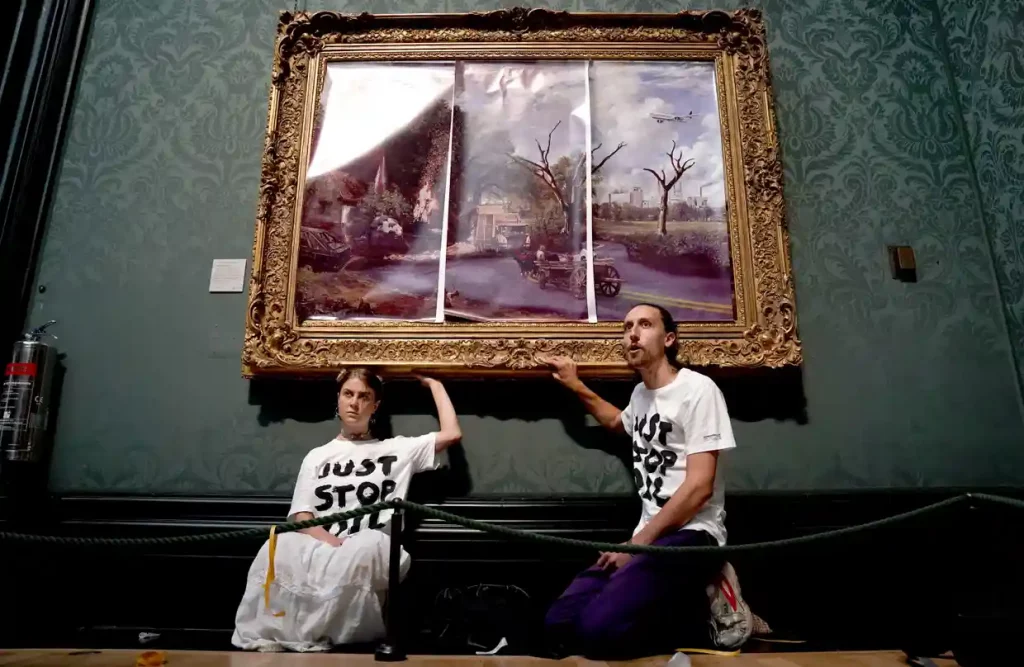from The Guardian

Just Stop Oil’s Hannah Hunt and Eden Lazarus glued their hands to the frame of John Constable’s The Hay Wain last July. Photograph: Kirsty O’Connor/PA
Two climate protesters have been ordered to compensate the National Gallery after they were found guilty of causing more than £1,000 of damage to the Hay Wain, probably John Constable’s best-known painting.
In July Just Stop Oil supporters Hannah Hunt, 23, and Eden Lazarus, 22, taped printed posters of a dystopian reimagining of the landscape over its canvas, before glueing their hands to its gilt frame.
“You can forget our ‘green and pleasant land’ when further oil extraction will lead to widespread crop failures which means we will be fighting for food,” Hunt said at the time.

Eden Lazarus and Hannah Hunt arrive at Westminster magistrates court on Tuesday. Photograph: James Manning/PA
On Tuesday, each was convicted of causing criminal damage by a district judge at Westminster magistrates court.
Hunt and Lazarus had denied the charge, arguing that articles 10 and 11 under the European convention of human rights – the rights to freedom of expression and of assembly – gave them lawful excuse for their actions.
But district judge Daniel Sternberg rejected their defence, saying the damage they caused was “significant not trivial” and that the defendants “were reckless” and caused it “without lawful excuse”.
He handed each an 18-month conditional discharge and ordered that they pay the National Gallery £540.74 each in compensation, totalling the cost of the damage. If they committed any further offences within that time frame they were liable to have the matter “reopened” and the court could send them “to prison”, Sternberg said.
The Hay Wain, painted in 1821, shows a rural Suffolk scene of a wagon returning to the fields across a shallow ford for another load. During the 4 July protest, Hunt and Lazarus had pasted three panels over its canvas that reimagined the scene, replacing the river with a road, placing smoke-spewing factories on the horizon, and loading the titular hay wain itself with a broken washing machine.
Giving evidence during the trial, both defendants claimed they made “a deliberate effort” to avoid damaging Constable’s painting.
They said they enlisted advice from an “art expert” who told them that “low tack tape” and a small amount of glue would not cause damage to the painting or its frame.
But the court heard that the painting was taken to be restored at the cost of £1,081 and fitted with a glass sheet before it was re-exhibited the next morning.
